- Joined
- Mar 7, 2007
- Messages
- 686
- Reaction score
- 2,095
I use India ink.....cut the lines, add ink with a "Q" tip, wipe off the excess with a damp paper towel. Once all the engraving is done and inked, there is not much left to clean up on the horn surface but if there is, it is easy to do. No sanding, Scotch bright, or hard scrubbing.....here is a silver mounted horn i did some time ago with India ink......
The raw horn had a thick tip allowing for a heavily carved throat. The horn is mounted fore and aft with sterling silver bands and strap swivels. The stopper is turned from ebony and the horn tip has a brass liner that prevents splitting. The base plug is turned walnut and is fitted with a threaded, wooden cascabel for easy filling. The engraved nautical chart is of the Chesapeake Bay area around Annapolis and is taken (including the antiquated spelling) from a map made of the area in November of 1769.
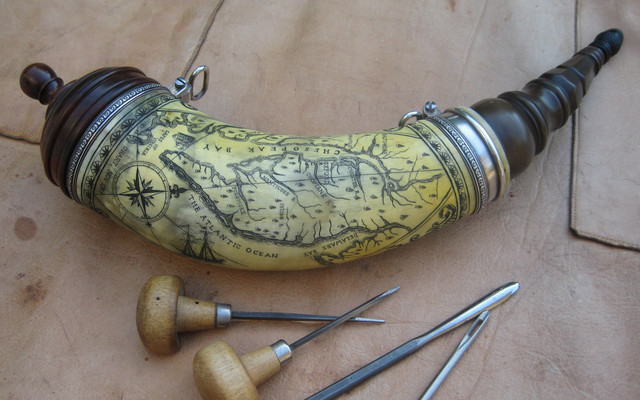
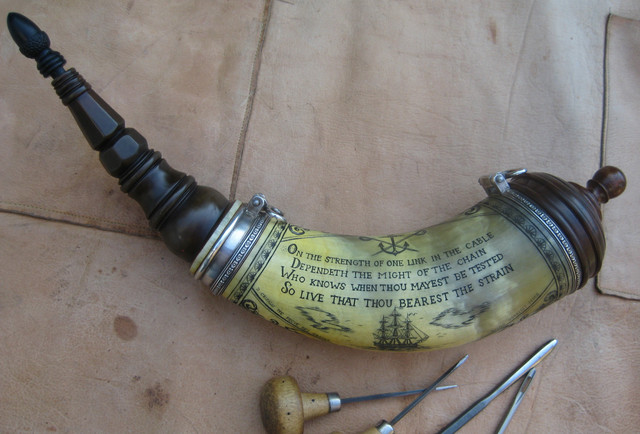
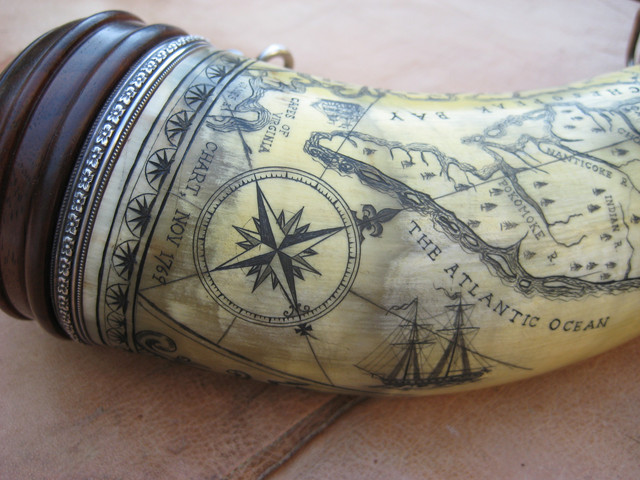
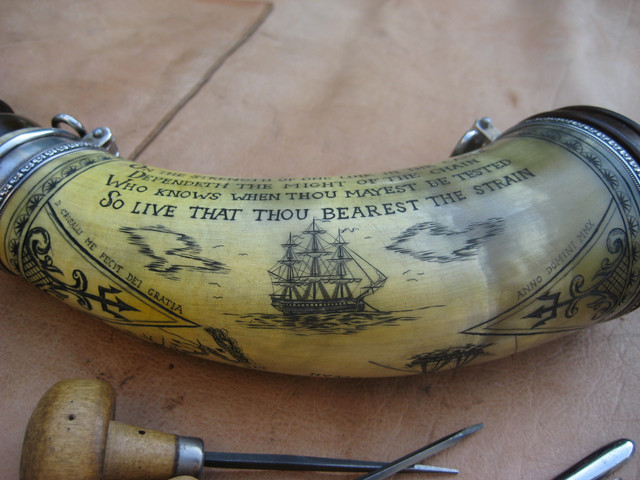
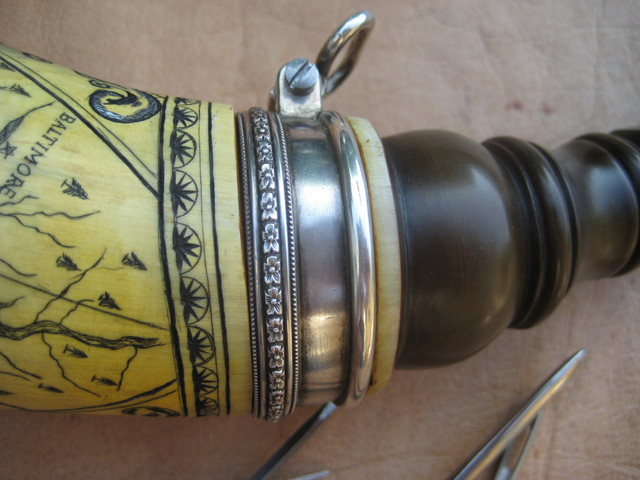
And another with black, red, and a little blue India ink......
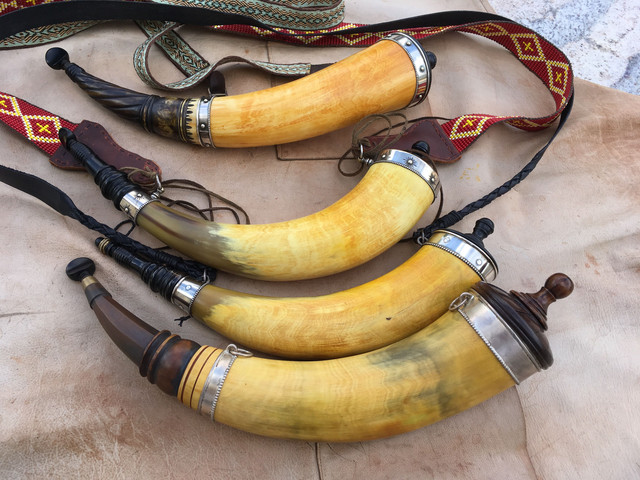
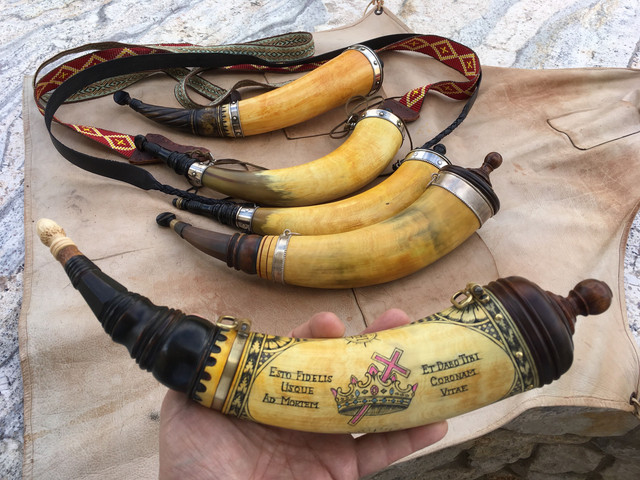
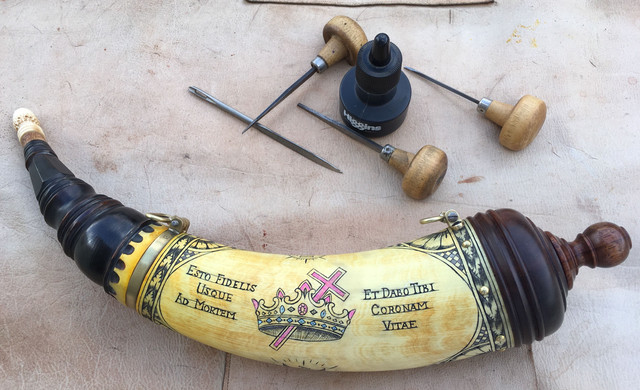
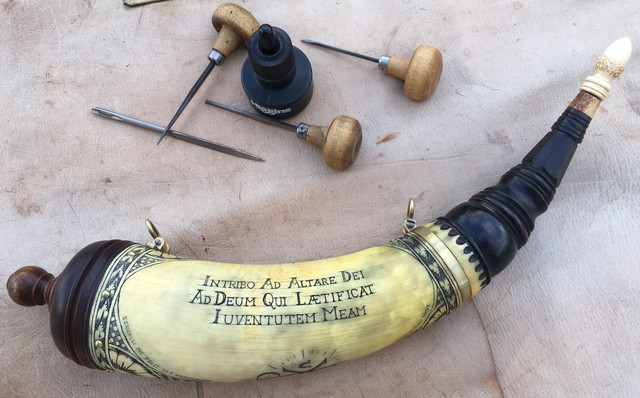
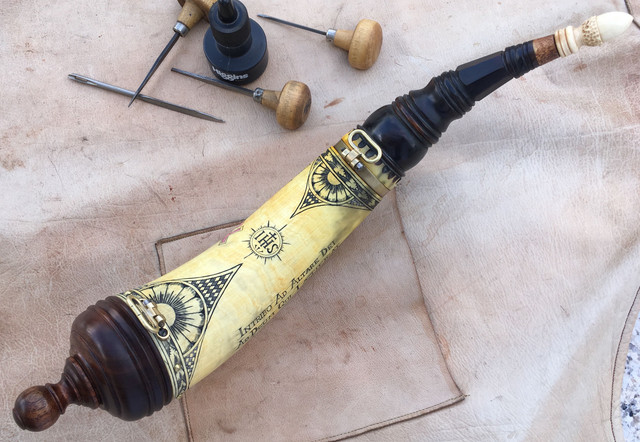
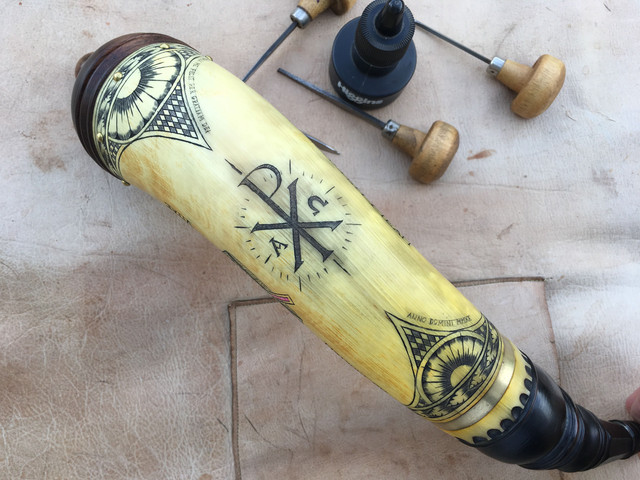
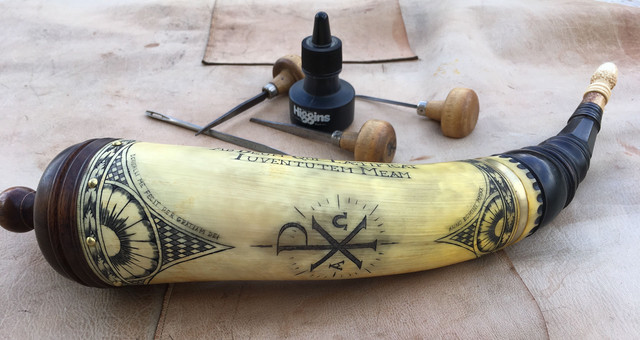
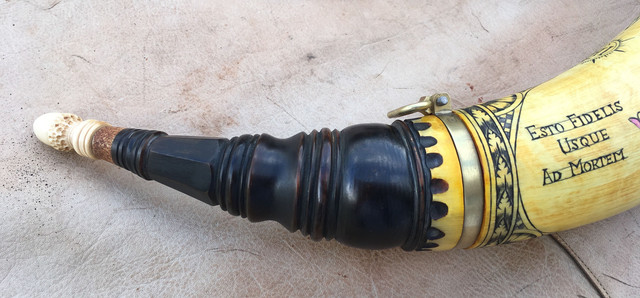
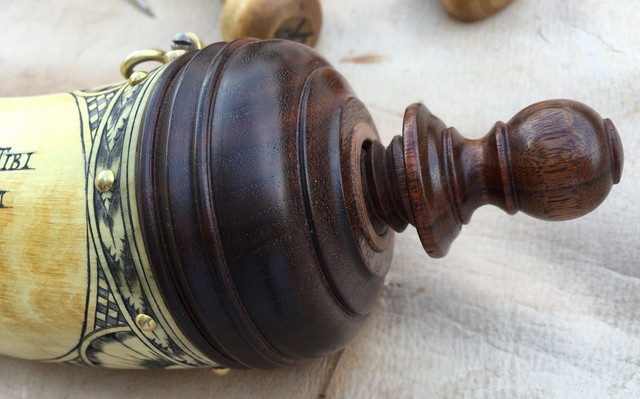
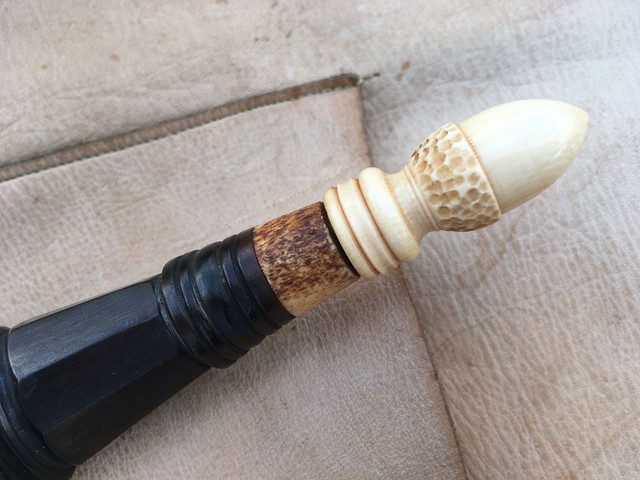
The raw horn had a thick tip allowing for a heavily carved throat. The horn is mounted fore and aft with sterling silver bands and strap swivels. The stopper is turned from ebony and the horn tip has a brass liner that prevents splitting. The base plug is turned walnut and is fitted with a threaded, wooden cascabel for easy filling. The engraved nautical chart is of the Chesapeake Bay area around Annapolis and is taken (including the antiquated spelling) from a map made of the area in November of 1769.





And another with black, red, and a little blue India ink......















